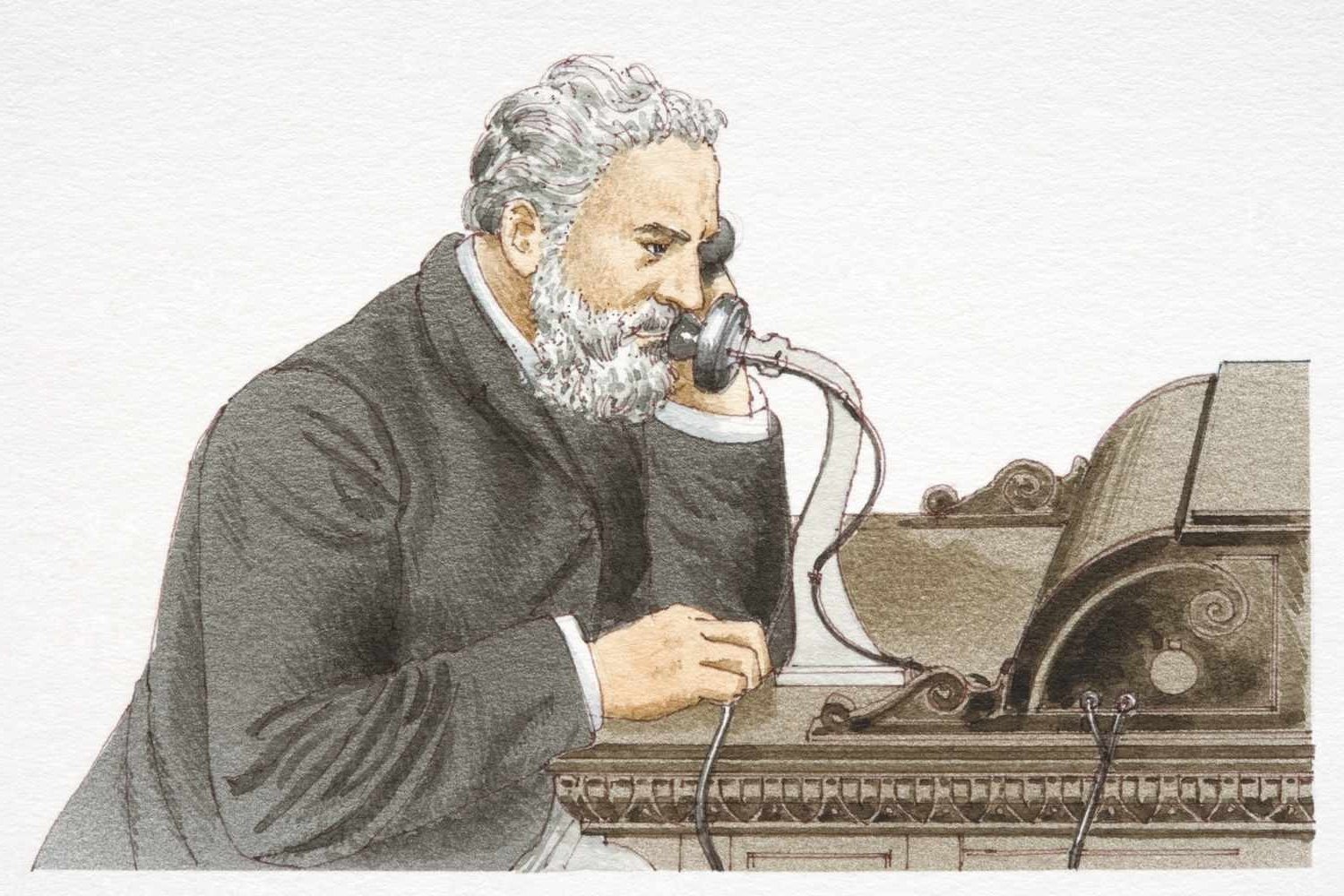
Who invented the telephone? Alexander Graham Bell is the name that often comes to mind. But did you know there were other inventors working on similar devices around the same time? The invention of the telephone is a fascinating tale filled with innovation, competition, and a bit of controversy. From Bell's first successful call to the legal battles that ensued, the history of the telephone is as complex as it is intriguing. This post will take you through 34 interesting facts about the invention of the telephone, shedding light on the people, the technology, and the impact it had on the world. Get ready to dial into history!
The Birth of the Telephone
The invention of the telephone revolutionized communication, making it possible to talk to someone miles away in real-time. Here are some fascinating facts about this groundbreaking invention.
- Alexander Graham Bell is credited with inventing the telephone in 1876.
- Bell's first successful experiment with the telephone happened on March 10, 1876.
- The first words spoken over the telephone were, "Mr. Watson, come here, I want to see you."
- Bell was originally working on a device to help the deaf when he stumbled upon the idea for the telephone.
- Elisha Gray filed a patent for a similar device on the same day as Bell, leading to a famous legal battle.
Early Telephone Technology
The initial technology behind the telephone was rudimentary but effective. Let's dive into some early technical aspects.
- The first telephones converted sound into electrical signals using a liquid transmitter.
- Early telephones had no dials; operators manually connected calls.
- The first telephone switchboard was installed in New Haven, Connecticut, in 1878.
- Bell's original telephone design included a single wire for both transmitting and receiving signals.
- The first long-distance call was made in 1884 between Boston and New York.
Telephone Adoption and Impact
The telephone quickly became an essential tool for business and personal communication. Here are some facts about its adoption and impact.
- By 1880, there were over 49,000 telephones in the United States.
- The first telephone directory was published in New Haven in 1878, listing 50 subscribers.
- Women were often employed as telephone operators because they were considered more polite and patient.
- The telephone played a crucial role in emergency response, allowing quicker communication with fire and police departments.
- The invention of the telephone led to the creation of new industries, including telecommunications and customer service.
Innovations and Improvements
Over the years, the telephone has undergone numerous innovations and improvements. Here are some key developments.
- The rotary dial was introduced in 1891, allowing users to dial numbers directly.
- The first transcontinental telephone call was made in 1915 between New York and San Francisco.
- Touch-tone dialing was introduced in 1963, replacing the rotary dial.
- The first mobile phone call was made by Martin Cooper of Motorola in 1973.
- Caller ID technology was introduced in the 1980s, allowing users to see who was calling before answering.
Cultural Impact of the Telephone
The telephone has had a significant cultural impact, influencing everything from social interactions to popular media.
- The phrase "reach out and touch someone" became popular in the 1980s due to an AT&T advertising campaign.
- Telephones have been featured prominently in movies and TV shows, symbolizing connection and communication.
- The telephone booth became an iconic symbol, often used in superhero stories like Superman.
- The term "phone tag" describes the back-and-forth game of missed calls between two people.
- The telephone has inspired numerous songs, including "Call Me" by Blondie and "Telephone" by Lady Gaga.
Modern Telephony
Today's telephones are vastly different from their 19th-century counterparts. Here are some facts about modern telephony.
- Smartphones combine the functionality of a telephone with that of a computer.
- Voice over Internet Protocol (VoIP) allows phone calls to be made over the internet.
- Video calling has become commonplace, allowing face-to-face communication from anywhere in the world.
- Text messaging, introduced in the 1990s, has become a primary mode of communication for many people.
- The global number of mobile phone subscriptions surpassed the world population in 2014.
Fun and Quirky Telephone Facts
Here are some fun and quirky facts about telephones that you might not know.
- The world's largest telephone was built in 1988 and is 14 feet tall.
- The first phone book was only one page long.
- The term "hang up" comes from the early practice of hanging the earpiece on a hook.
- The longest phone call on record lasted over 54 hours.
The Final Ring
Telephones have come a long way since Alexander Graham Bell's first invention. From rotary dials to smartphones, these devices have transformed how we communicate. Bell's initial idea sparked a revolution, connecting people across continents and making the world feel smaller.
Understanding the history of the telephone helps us appreciate the technology we often take for granted. Each innovation, from touch-tone dialing to mobile networks, has made communication faster and more accessible.
Next time you pick up your phone, remember the journey it took to get here. It's not just a gadget; it's a piece of history that continues to evolve. So, whether you're making a call or sending a text, you're part of a story that started over a century ago. Keep that in mind and stay connected.
Was this page helpful?
Our commitment to delivering trustworthy and engaging content is at the heart of what we do. Each fact on our site is contributed by real users like you, bringing a wealth of diverse insights and information. To ensure the highest standards of accuracy and reliability, our dedicated editors meticulously review each submission. This process guarantees that the facts we share are not only fascinating but also credible. Trust in our commitment to quality and authenticity as you explore and learn with us.
